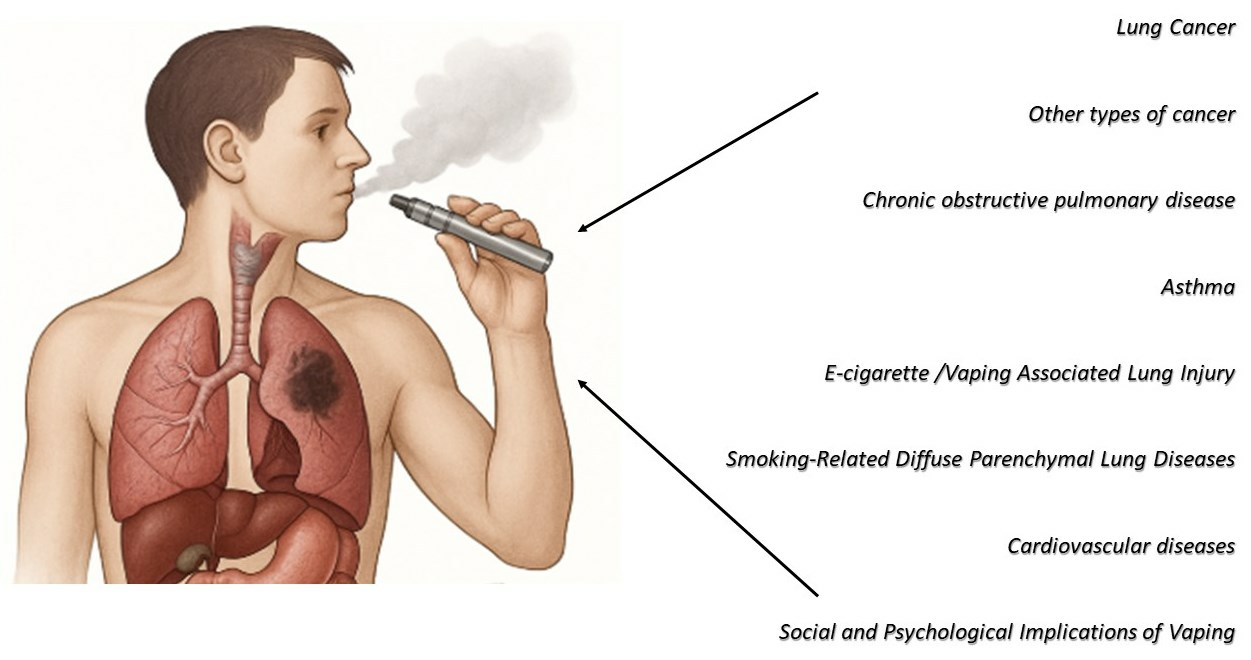The American Lung Association’s comprehensive review of electronic cigarettes underscores significant health risks and clarifies misconceptions.
Key Health Risks Identified
Evidence confirms e-cigarettes expose users to harmful substances:

- Harmful Aerosol Contents: Vapor contains ultrafine particles, volatile organic compounds, heavy metals (nickel, tin, lead), and flavorings linked to lung disease.
- Diacetyl Danger: Many flavored e-cigarettes contain diacetyl, directly associated with severe bronchiolitis obliterans (“popcorn lung”).
- EVALI Lung Injury: Vitamin E acetate, used in THC-containing vaping products, is strongly linked to EVALI (E-cigarette or Vaping Product Use-Associated Lung Injury).
- Formaldehyde Release: High-temperature device settings can release carcinogenic formaldehyde from e-liquids.
- Youth Nicotine Addiction: High nicotine levels in popular devices (pods, disposables) rapidly addict the developing adolescent brain.
Youth and Young Adults at Heightened Risk
The ALA emphasizes e-cigarettes pose severe threats to younger populations:
- Gateway Effect: Youth e-cigarette users face a significantly higher risk of initiating traditional cigarette smoking.
- Brain Development Impact: Nicotine disrupts adolescent brain development, impairing attention, learning, and impulse control.
- Appeal Factors: Sweet flavors, discreet designs, and targeted marketing heavily contribute to youth initiation and sustained use.
Misconceptions About Smoking Cessation
The ALA review counters industry claims:
- Not Proven Safe or Effective Cessation Tools: E-cigarettes are not FDA-approved for smoking cessation. Evidence supporting their long-term effectiveness compared to proven methods is inadequate.
- Dual Use Danger: Most adult e-cigarette users continue smoking combustible cigarettes (dual use), increasing overall toxicant exposure rather than reducing harm.
- Prolonged Addiction Risk: Using e-cigarettes for cessation can perpetuate nicotine dependence instead of eliminating it.
Conclusions and Recommendations
The American Lung Association maintains a clear stance:
- Not Safe Alternatives: E-cigarettes are inherently unsafe, especially for youth, young adults, pregnant individuals, and non-smokers.
- Strong Regulations Needed: Urges comprehensive prohibition of all flavored tobacco products, including e-cigarettes, and stricter marketing and sales regulations to curb youth access and appeal.
- Seek Proven Cessation Methods: Recommends individuals who smoke consult healthcare providers about FDA-approved cessation therapies instead of using unregulated e-cigarettes.










